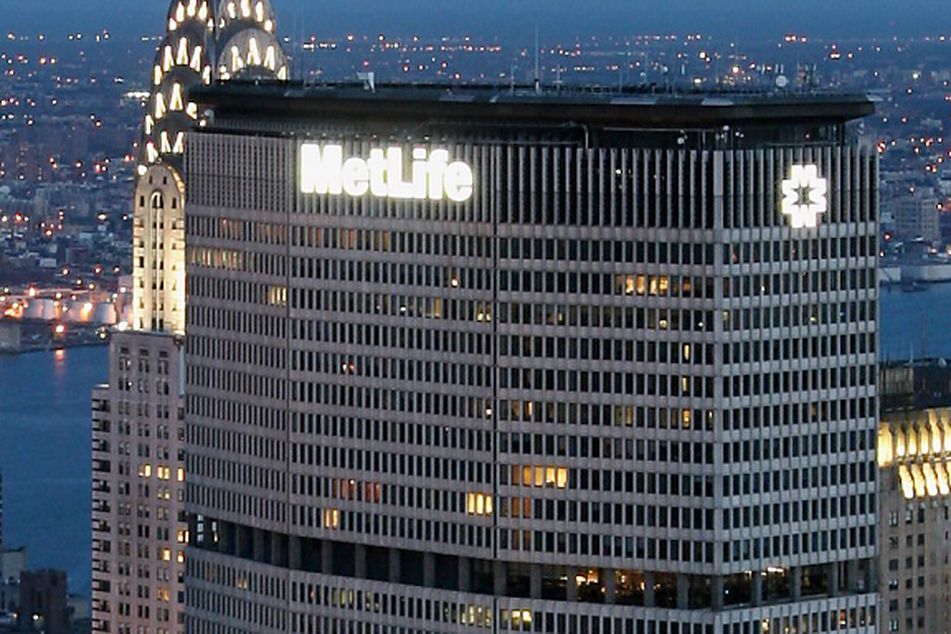Why is MetLife charging into business that others are exiting?

Insurer MetLife moving into the business in a big way, while banks back out. Says one industry consultant: 'They must know something I don't know.'
MetLife Inc., the biggest U.S. life insurer, is poised to become the No. 1 reverse-mortgage lender as Wells Fargo & Co. and Bank of America Corp. leave the market.
Wells Fargo, the largest U.S. home lender, is retreating from reverse mortgages in part because of “unpredictable home values,” the company said last week. The reverse mortgage was the most prominently featured product last week on the web site of MetLife Bank, a unit that the company said may hedge the parent against declines in the main insurance business.
“They must know something that I don’t know,” said David Lykken, president of Mortgage Banking Solutions, an Austin, Texas-based consulting firm. “They’re too smart to be heading into an area that’s disastrous.”
Demand for reverse mortgages contracted from record sales in 2009 after the housing slide eroded the home equity that seniors draw on to qualify for loans. MetLife climbed to second in May from fifth place two years earlier, according to government data.
“MetLife had been zooming toward No. 1” even before Wells Fargo announced its departure, said Marty Bell, the National Reverse Mortgage Lenders Association’s director of marketing and communications. “They’ve been in it a lot shorter time than everybody else, and they’ve been really building it.”
MetLife entered the business in 2008 with a purchase from EverBank Financial Corp. Later that year, the insurer bought a mortgage business from First Horizon National Corp. The employee count at MetLife Bank, the insurer’s lending unit, surged to 4,985 at the end of March from 3,768 a year earlier, according to the Federal Deposit Insurance Corp. The worker count was 85 at the end of 2007.
‘More Natural’
Reverse-mortgage lenders issue loans to elderly homeowners and accept real estate as repayment. The contracts allow borrowers, aged 62 or older, to remain in their homes and receive either a lump sum payment or a stream of income. The lenders — or the mortgage investors that purchase the loans — count on making a profit by eventually selling the property when the borrowers die or change homes.
“It’s a retirement-planning vehicle so it’s something more natural that a life insurer like MetLife would offer,” Randy Binner, an analyst with FBR Capital Markets, said in an interview. “It’s a small, but growing part of their business.”
The expansion of MetLife Bank gives its parent a “natural hedge” against a contraction in insurance returns when interest rates decline, William Wheeler, the insurer’s chief financial officer, said in December. That’s because more borrowers refinance mortgages when rates are low, he said.
Bank of America
Ted Mitchell, a spokesman for MetLife, declined to comment. Prudential Financial Inc., the second-biggest U.S. life insurer, doesn’t issue reverse or traditional residential mortgages, said Bob DeFillippo, a spokesman.
MetLife had 932 reverse mortgages endorsed by the Federal Housing Administration in May, compared with 1,092 at San Francisco-based Wells Fargo and 332 at Bank of America, according to government data. MetLife ranked fifth in May of 2009 with 199. That compared with more than 1,400 at Wells Fargo and 726 at No. 2 Bank of America and its Countrywide unit.
MetLife Bank, which sells the mortgages it issues, had $15.6 billion of assets as of March 31, according to the FDIC. San Francisco-based Wells Fargo’s main unit had $1.1 trillion of assets, while Charlotte, North Carolina-based Bank of America’s biggest FDIC-regulated subsidiary had $1.5 trillion.
Bank of America, the biggest U.S. lender by assets, announced its exit from reverse mortgages in February, saying the staff and resources used by the operation were needed in other parts of the company. Bank of America posted a $2.2 billion loss last year as it negotiated settlements with counterparties who accused the bank of selling loans based on fraudulent data.
Stock Slump
Bank of America declined 21 percent this year through yesterday on the New York Stock Exchange, compared with the 13 percent slide at Wells Fargo and an 8.8 percent drop at MetLife.
The reverse-mortgage market is supported by the Government National Mortgage Association, a government-owned insurer of mortgage-backed securities commonly known as Ginnie Mae. The agency guarantees the loans that are issued by lenders like MetLife and subsequently sold to investors. MetLife charges investors to then monitor the home collateral and ensure terms of the contracts are met.
“None of the lenders are doing these to keep them on balance sheet,” said John Lunde, founder of Reverse Market Insight, an Aliso Viejo, California-based data and consulting firm focused on the reverse mortgage market.
Net income at MetLife Bank was little changed last year at $218 million. That is less than 10 percent of MetLife’s total.
“MetLife Bank is nice,” Robert Henrikson, chairman of the insurer, said in a May 24 investor conference. “It’s one area where low, low interest rates present profit opportunities.”
–Bloomberg News–
Learn more about reprints and licensing for this article.






